Welcome to the ultimate guide to gardening! In this comprehensive book, I will share my personal experiences and provide you with the best gardening tips and ideas to help you master the art of gardening from A to Z. From seed starting to soil management, I will guide you through the process of becoming a skillful gardener.
Key Takeaways:
- Mastering the art of gardening requires knowledge and guidance.
- This guide covers a wide range of topics, from vegetable gardening to Japanese gardens.
- Whether you’re a beginner or an experienced gardener, this guide has something for everyone.
- Get ready to discover the best gardening tips and ideas to help you grow a beautiful and bountiful garden.
Cultivating Your Green Thumb: Beginner’s Guide to Gardening
As you embark on your gardening journey, it’s important to cultivate your green thumb and set a strong foundation for success. In this section, I will guide you through the essential steps of garden maintenance and introduce you to the must-have gardening tools.
Before you start planting, it’s important to consider garden maintenance. Regular watering, pruning, and weeding are crucial for healthy plant growth. You should also be aware of any pests or diseases that may affect your plants and take necessary measures to prevent them.
To make garden maintenance easier, invest in the right tools. A watering can or hose is essential for regular watering. Pruners and shears are necessary for cutting back unwanted growth, while a trowel and rake are useful for planting and soil preparation. Gloves and a sun hat are also recommended for protection from the sun and prickly plants.
When choosing your gardening tools, look for those that are durable and comfortable to handle. Stainless steel blades and ergonomic handles are good options. You may also want to consider purchasing a wheelbarrow for transporting heavy materials and a kneeling pad for more comfortable gardening.
By incorporating these essential gardening tools into your routine, you’ll be well on your way to cultivating a thriving garden.
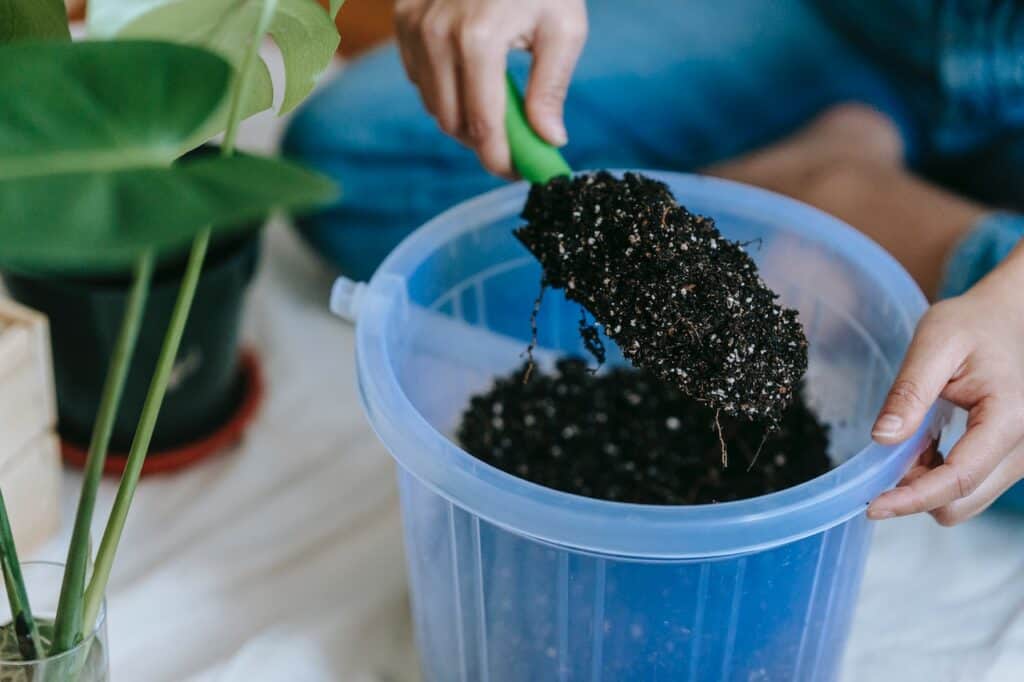
Gardening requires lots of water – most of it in the form of perspiration.
– Lou Erickson
Delighting in Diversity: Vegetable Gardening
There’s nothing quite like the satisfaction of growing your own vegetables and enjoying the flavors of your hard work. In this section, we will explore the world of vegetable gardening and discover the wonders of organic cultivation.
Vegetable gardening is not just a hobby; it’s a way of life. As an avid gardener, I love growing my own vegetables and knowing exactly where my food comes from. It’s a connection to the past and the kitchen that brings me joy every day.
When it comes to vegetable gardening, the right seed variety is essential. From sweet tomatoes to crisp cucumbers, there are countless varieties to choose from. Personally, I recommend starting with heirloom seeds, which are time-tested and known for their flavor and hardiness.
Organic gardening practices are also vital to successful vegetable cultivation. By avoiding chemical pesticides and fertilizers, you can ensure that your vegetables are safe and healthy to eat. Instead, focus on building healthy soil, rotating crops, and encouraging natural pest control methods.
Seed germination is another crucial aspect of vegetable gardening. By understanding the needs of each seed type, you can ensure successful germination and healthy plant growth. Factors such as soil temperature, moisture, and light exposure all play a role in seed germination.
If you’re looking to expand your knowledge of vegetable gardening, there are a variety of resources available. While the book The Flower Gardener’s Bible may seem unrelated, it offers valuable insights on soil fertility and management, a crucial aspect of vegetable cultivation. Additionally, the list of gardening books provided in our article can provide inspiration and further knowledge in gardening.
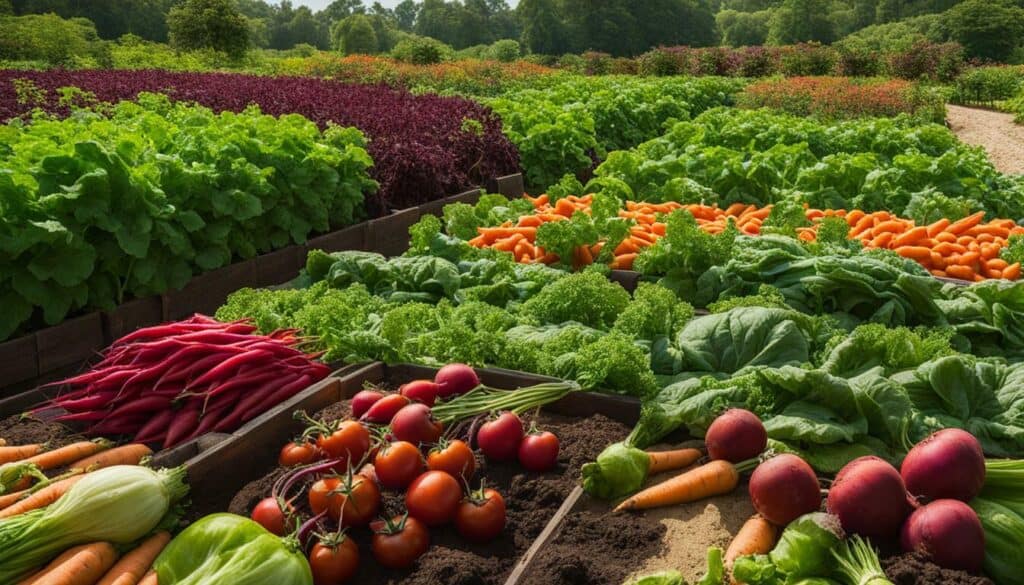
| Tip: | Try companion planting to deter pests and encourage healthy plant growth. For example, planting marigolds alongside tomatoes can help repel harmful insects. |
|---|---|
| Tip: | Consider using raised beds for your vegetable garden, which provide better drainage and easier access for planting and maintenance. |
Blooming with Beauty: Flower Gardening
Let your garden bloom with beauty as we dive into the enchanting world of flower gardening. In this section, I will share tips and ideas for growing a vibrant array of flowers, creating stunning garden displays that bring joy to your heart. Flower gardening is an art and a practice that involves nurturing various types of flowers, bringing color and beauty to landscapes. Whether you’re a beginner or an experienced gardener, flower gardening can be enjoyable and rewarding.
One of the essential aspects of flower gardening is selecting the right flowers for your region. It’s important to choose flowers that are well-suited to your climate and soil type, as this will help ensure their success. To begin, research the flowers that thrive in your area and make a list of your favorites. Consider factors such as bloom time, color, scent, and height to create a cohesive and stunning display.
Understanding soil fertility is also crucial for successful flower gardening. Proper soil preparation and maintenance can help flowers grow strong and healthy. Before planting, test your soil to determine its pH level and nutrient content. This will help you choose the right fertilizers and amendments to improve soil quality and promote healthy flower growth.
When it comes to cultivation techniques, there are a variety of practices that can help flowers thrive. Proper watering, pruning, and deadheading can help ensure healthy growth and increase flower production. Additionally, choosing the right planting location and providing adequate sunlight and protection from pests are key factors in successful flower gardening.
Looking for inspiration? Flower gardening books and guides offer a wealth of knowledge and tips for successful gardening. From designing stunning garden displays to exploring various cultural practices, there’s always something new to learn and discover in the world of flower gardening. And for those who want to get started right away, various sources offer a wide range of flower gardening products, including seeds, bulbs, and plants.
Whether you’re growing vegetables alongside your flowers or creating a dedicated flower garden, flower gardening offers a fulfilling and rewarding experience for those who have a passion for nature and blossoming beauty. So, let your garden bloom with beauty as you embark on the journey of flower gardening.
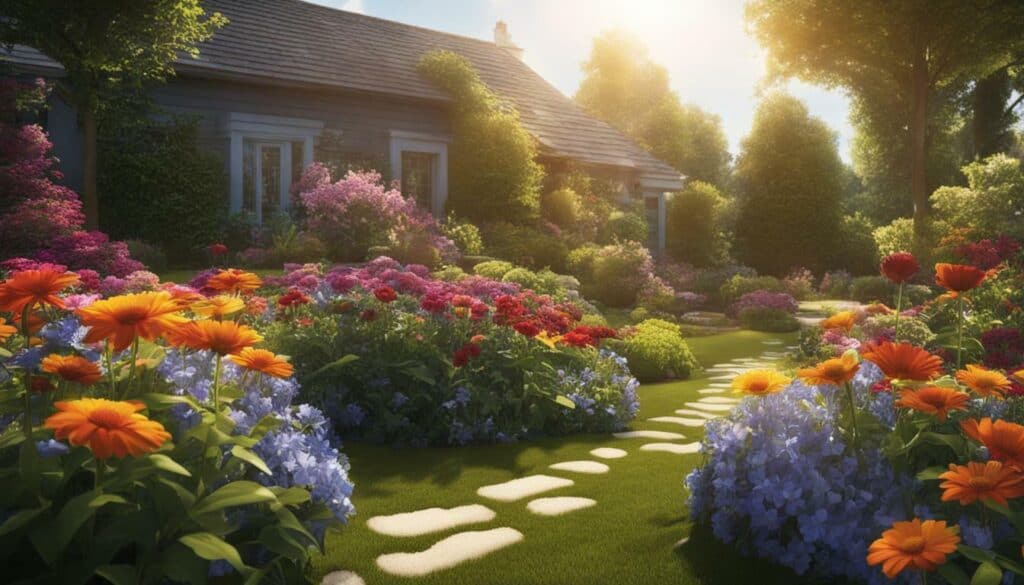
Bringing the Outdoors Indoors: Indoor Gardening
Don’t let limited space stop you from enjoying the wonders of gardening. In this section, we will discover the joys of indoor gardening and explore creative ideas for bringing the beauty of nature into your home.
Indoor gardening is a popular trend that allows individuals to enjoy the benefits of gardening even in a limited space. This practice has gained popularity in recent years, as it provides numerous benefits such as improving air quality, reducing stress, and enhancing the overall aesthetic appeal of a living space.
One of the biggest benefits of indoor gardening is the ability to grow plants and vegetables inside your home. This means you can enjoy fresh produce year-round, regardless of the weather conditions outside. It’s also a great way to add a touch of greenery to your home, creating a refreshing and peaceful atmosphere.
If you’re new to indoor gardening, there are various resources available to help you get started. There are numerous books and products designed specifically for indoor gardening, providing valuable information and tips for transforming your home into a thriving oasis.
When it comes to indoor gardening ideas, the possibilities are endless. You can create a vertical garden using hanging planters and shelves, or even grow herbs and vegetables in a windowsill garden. Terrariums and small indoor gardens are also great options for those with limited space.
With indoor gardening, you can also get creative with the containers you use to grow your plants. From mason jars to repurposed furniture, there are countless unique options for adding a touch of personality to your indoor garden.
Overall, indoor gardening is a wonderful way to bring the beauty of nature into your home. Whether you’re a seasoned gardener or just starting out, there’s something for everyone when it comes to indoor gardening. So why not give it a try and start enjoying the benefits today?
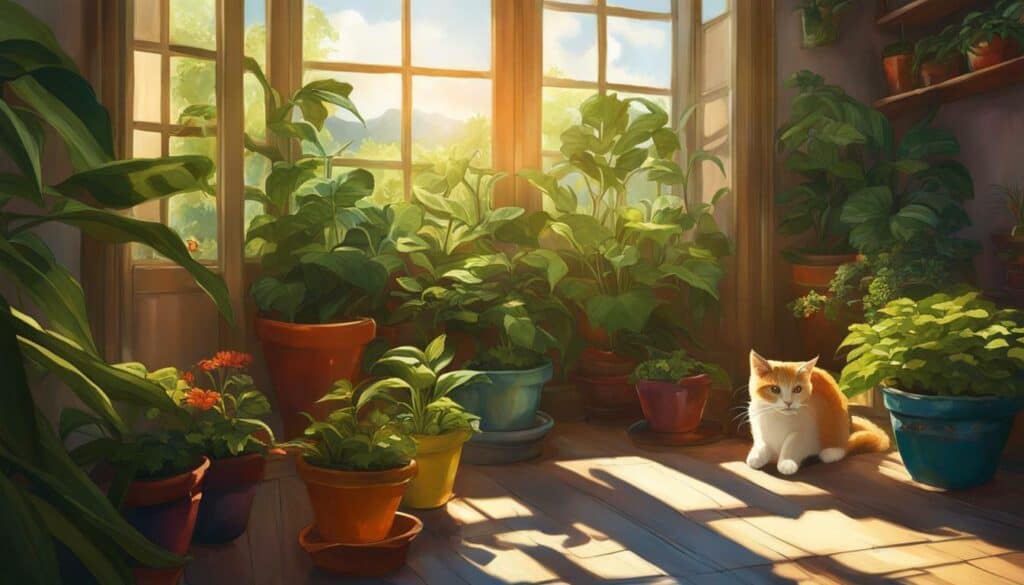
Tools, Techniques, and Tips: Garden Maintenance
A well-maintained garden is a happy garden, and in this section, I will share essential tools, techniques, and tips to ensure your garden flourishes. From watering to pest control, we’ll cover everything you need to know for successful garden maintenance.
One of the key aspects of garden maintenance is ensuring proper watering. It’s important to understand the watering needs of different plants and provide them with adequate moisture. Overwatering or underwatering can be detrimental to plants, so finding the right balance is essential.
Regular pruning is essential to promote healthy growth and maintain the desired shape of plants. Pruning helps remove dead or diseased branches, encourages better air circulation, and stimulates new growth. It’s important to use clean and sharp tools for pruning to avoid damaging the plants.
Managing pests is crucial to keep your plants healthy. A combination of organic and chemical methods can be used for pest control. Using insecticidal soaps, neem oil, or introducing beneficial insects can help control pests naturally. Regular inspection of plants and early intervention can prevent pests from causing substantial damage.
Ensuring healthy and fertile soil is a fundamental aspect of garden maintenance. Regular soil testing can help determine the nutrient needs of your plants, allowing you to make necessary amendments. Organic matter, such as compost, can be added to improve soil structure and nutrient content.
Mulching plays a vital role in garden maintenance by conserving moisture, suppressing weeds, and regulating soil temperature. Organic mulches like wood chips or straw can be spread around plants to retain moisture and provide insulation.
Regular weeding is necessary to prevent weeds from competing with your plants for resources. Hand-pulling weeds or using tools like a hoe can help keep them in check. Mulching can also help reduce weed growth.
A variety of tools are needed for garden maintenance, including gloves, pruners, shovels, rakes, and watering cans. The right tools make gardening tasks easier and more efficient.
Different seasons require different maintenance tasks. Properly preparing your garden for each season, such as clearing debris in winter, fertilizing in spring, protecting from extreme temperatures in summer, and preparing for dormancy in autumn, can help maintain overall garden health.
By following these tools, techniques, and tips for garden maintenance, you can ensure a vibrant and thriving garden year-round. Remember that gardening is a continuous learning process, and with time and experience, you will discover what works best for your specific garden.
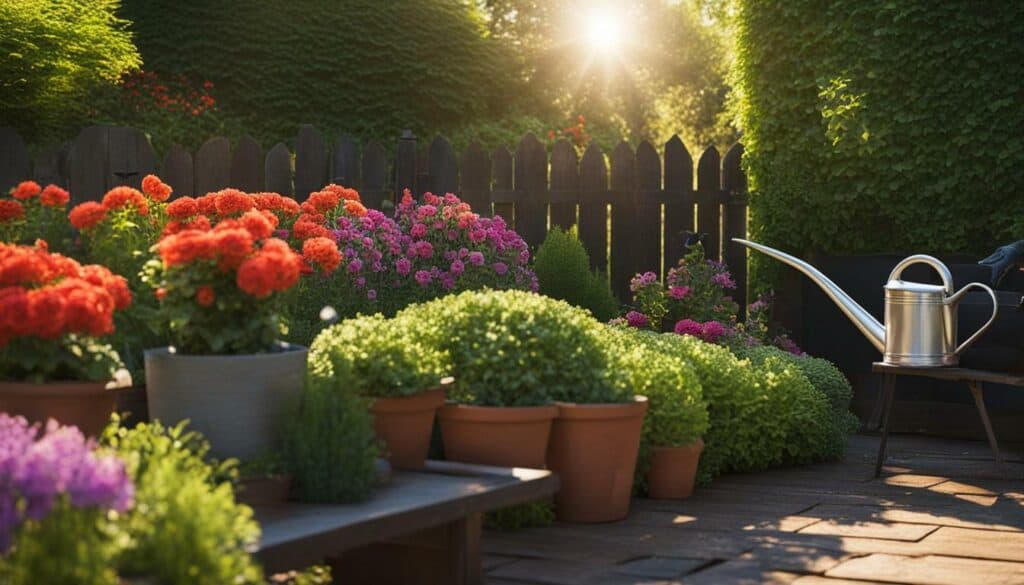
Digging Deeper: Soil Fertility and Management
The key to a bountiful garden lies in healthy soil, and in this section, we’ll dig deeper into soil fertility and management. Discover the importance of organic gardening and learn how to enhance your soil’s health to support thriving plants.
Soil fertility refers to the ability of soil to provide essential nutrients for plant growth. The composition of soil is critical, as it affects nutrient availability and other factors such as water-holding capacity and aeration. Organic matter content is especially important for soil fertility, as it provides nutrients, stabilizes soil structure, and increases water-holding capacity.
In addition to soil composition, pH levels are a crucial aspect of soil fertility and management. Different plants have varying pH requirements, and soil acidity or alkalinity can greatly affect nutrient availability. Therefore, it is important to regularly test soil pH and adjust it as needed to create optimal growing conditions.
Nutrient management is also critical for soil fertility. In order to ensure plants have access to essential nutrients, it is necessary to understand the specific nutrient requirements of different plants and the amounts of those nutrients present in the soil. Proper fertilization and nutrient management practices help to maintain optimal soil fertility and prevent nutrient imbalances and deficiencies that can impact plant growth.
Organic gardening practices are key to supporting soil health and fertility. By using natural fertilizers, avoiding synthetic pesticides and promoting the growth of beneficial microorganisms, organic gardening helps to maintain and improve soil health. Cultural practices such as cover cropping and crop rotation can also help enhance soil fertility by enriching soil with organic matter, creating a diverse environment for beneficial microorganisms and preventing nutrient depletion.
In conclusion, understanding the intricacies of soil fertility and management is pivotal to successful and sustainable gardening practices. By focusing on organic gardening practices and regularly monitoring soil composition, pH levels, and nutrient availability, gardeners can work towards creating an optimal environment for their plants to thrive.
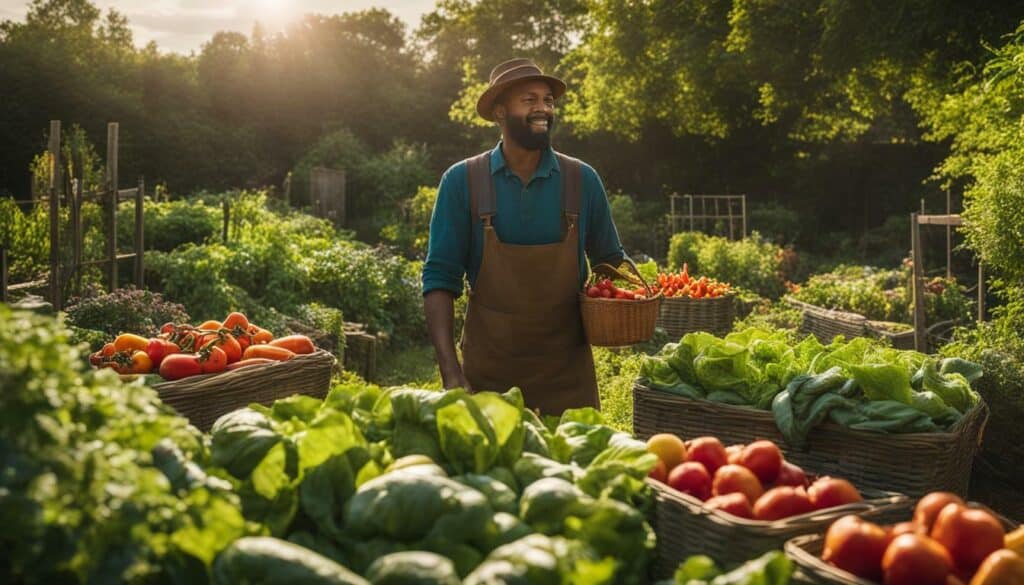
Essential Gardening Tools: A Comprehensive Guide
A gardener is only as good as their tools, and in this section, we will explore the essential gardening tools that will help you achieve success. From shovels to pruners, I will guide you through the must-haves and offer tips on keeping them in top shape.
First on our list is the digging fork, a versatile tool that can be used for digging, aerating, and turning over soil. A high-quality digging fork will have sturdy tines and a comfortable handle for easy use.
The second tool on our list is the hand trowel, an indispensable tool for planting small plants, removing weeds, and breaking up soil. Look for a trowel with a comfortable grip and a sturdy blade made from stainless steel.
Next up is the garden hoe, a versatile tool that can be used for weeding, chopping, and loosening soil. A good garden hoe will have a sharp blade and a comfortable handle for easy use.
Another essential gardening tool is the pruning shears, which are used for cutting back overgrowth and shaping plants. Look for a pair of pruning shears with a comfortable grip and sharp blades that can handle thick branches.
The fifth tool on our list is the watering can, which is used to water plants and keep them healthy. A good watering can should be lightweight and easy to pour, with a nozzle that allows for precise watering.
Lastly, we have the garden rake, a tool used for leveling soil, removing debris, and preparing seedbeds. Look for a garden rake with sturdy tines and a comfortable handle for easy use.
Remember, when it comes to gardening tools, quality matters. Look for tools made from durable materials and invest in high-quality brands that offer warranties. Proper maintenance is also key to ensuring your tools last for years to come. Clean your tools after each use, and store them in a dry place to prevent rust and corrosion.
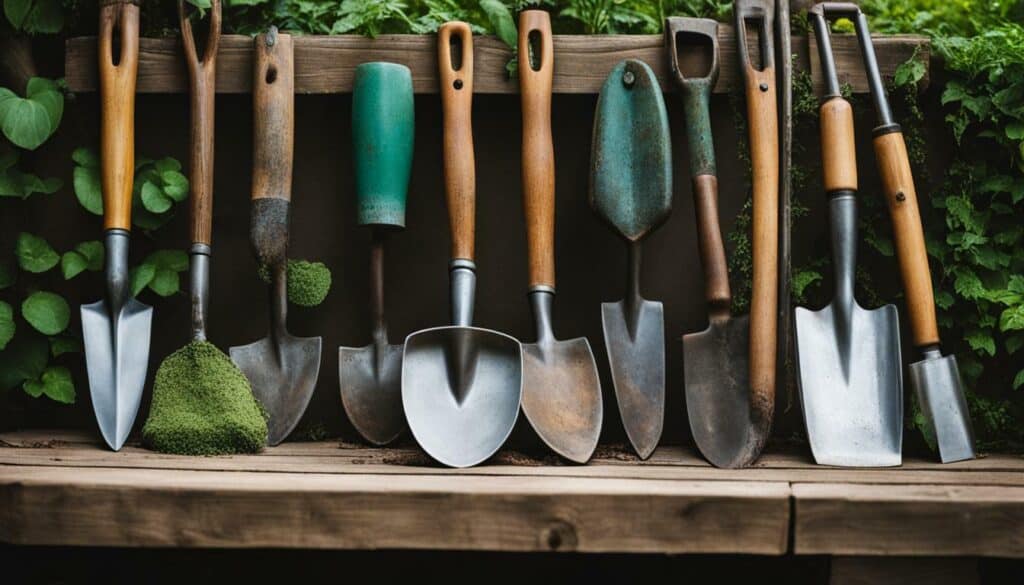
In addition to Essential Gardening Tools: A Comprehensive Guide, other recommended books on gardening include Color-Rich Gardening for the South, Cannabis Cultivation, and various gardening design and landscape books.
Nurturing Nature: Creating a Wildlife-Friendly Garden
Turn your garden into a haven for wildlife by embracing nature-friendly practices. In this section, we will explore the importance of creating a wildlife-friendly garden and provide tips on attracting and nurturing a diverse range of creatures. Garden maintenance and organic gardening are key aspects of creating a sustainable environment for both plants and animals.
Selecting the right plants is crucial for attracting wildlife to your garden. Native plants are the best choice as they are adapted to the local climate and provide food and shelter for local wildlife. Creating suitable habitats is also important. This includes providing nesting sites, such as birdhouses and bee hotels, and leaving areas of the garden undisturbed for animals to make their homes.
Books can be a valuable resource for creating a wildlife-friendly garden specific to your region. “Attracting Birds, Butterflies and Other Backyard Wildlife” by David Mizejewski provides inspiring ideas and designs for creating habitats for wildlife. For those in the Texas and Oklahoma regions, “The Wildlife-Friendly Vegetable Gardener” by Tammi Hartung offers advice on raising vegetables and provides ideal conditions for different crops.
Creating a garden that is colorful and vibrant is also important for attracting wildlife. “The Colorful Dry Garden” by Maureen Gilmer is a great resource for garden designs that are both water-wise and attractive to wildlife. For those interested in cannabis cultivation, “The Cannabis Gardener” by Penny Barthel provides information on raising cannabis in harmony with nature. And for those seeking inspiration from gardens abroad, “Under the Tuscan Sun” by Frances Mayes and “The Gardens of Easton Lodge” by Ursula Buchan showcase beautiful garden designs in Tuscany and East Anglia.
In addition to selecting the right plants and creating suitable habitats, garden maintenance is also important for nurturing a thriving wildlife-friendly garden. Organic gardening practices, such as composting and eliminating chemical pesticides, will create a healthy environment for both plants and animals. By embracing nature-friendly practices and creating a sustainable garden, you can create a welcoming home for a diverse range of wildlife.

Sustainable Gardening: Reducing Waste and Saving Resources
Gardening can be a sustainable endeavor, and in this section, we will explore ways to reduce waste and save resources while tending to your garden. From composting to water-saving techniques, discover how you can be an eco-conscious gardener.
Sustainable gardening starts with choosing organic gardening methods that are gentle on the environment. This includes avoiding chemical fertilizers and pesticides, and instead opting for organic alternatives. By using compost as a natural way to enrich soil, gardeners can reduce waste and save resources. Vegetative kitchen scraps, grass clippings, and fallen leaves can all be used to make compost, which is beneficial for both plants and the environment.
In addition to composting, water-saving techniques can greatly reduce the amount of water used in a garden. One way to save water is to choose drought-resistant plants that can survive with little water. Another option is to use a drip irrigation system that delivers water directly to the plant roots, minimizing evaporation. Rainwater harvesting is another excellent way to save water. Collecting rainwater in barrels can provide a free source of water for your garden.
Finally, reducing waste in the garden can have a positive impact on the environment. Gardeners can achieve this by practicing integrated pest management, which uses natural predators and beneficial insects to control pests rather than harmful chemicals. Additionally, practicing slow gardening can reduce waste and provide a no-stress philosophy to gardening.
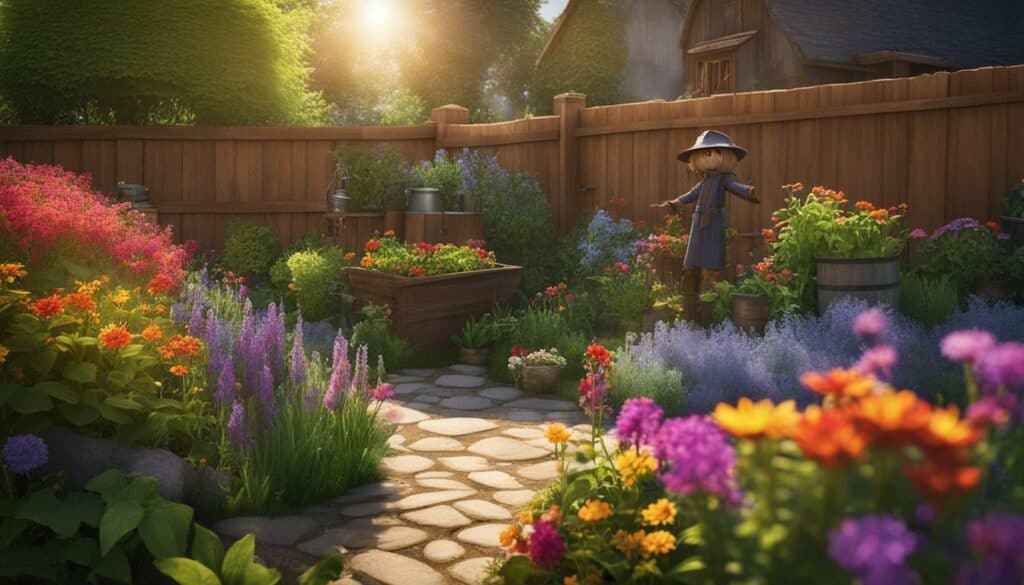
By following these simple tips and techniques, you can be an eco-conscious gardener and contribute to a more sustainable environment. Together, we can create a healthier planet for generations to come.
Conclusion
Congratulations on completing the ultimate gardening guide! I hope this comprehensive resource has equipped you with the knowledge and inspiration to master the art of gardening A-Z. Whether you are a beginner or an experienced gardener, I trust you have found useful tips and ideas to enhance your gardening experience.
Remember, gardening is not just a hobby, it is a way of life. It connects us with nature, promotes wellness, and sustains our environment. By nurturing our gardens, we contribute to the beauty and balance of our planet.
I encourage you to continue exploring gardening ideas and to experiment with new techniques. Every garden is unique, and every gardener has their own style. Let your imagination guide you and have fun in the process.
Thank you for joining me on this journey. I hope you have enjoyed this guide and that it has inspired you to create a beautiful and bountiful garden. Master the art of gardening and let your garden flourish!
FAQ
Q: What topics does the book cover?
A: The book covers a wide range of gardening topics, including beginner’s guide to gardening, vegetable gardening, flower gardening, indoor gardening, garden maintenance, soil fertility and management, essential gardening tools, creating a wildlife-friendly garden, and sustainable gardening.
Q: Does the book provide gardening tips?
A: Yes, the book is packed with valuable gardening tips and techniques for successful cultivation. It offers recommendations on the best varieties of plants to grow from seed, cultural practices, and advice usually only offered to commercial farmers and nurseries.
Q: Is the book suitable for beginners?
A: Absolutely! The book includes a beginner’s guide to gardening, providing all the necessary information for someone new to gardening. It covers the basics of garden maintenance and the essential gardening tools one should have.
Q: Does the book focus on organic gardening?
A: Yes, the book emphasizes organic gardening practices throughout. It provides insights into organic vegetable gardening and discusses the benefits of organic gardening for soil fertility and overall sustainability.
Q: Can I learn how to attract wildlife to my garden?
A: Absolutely! The book includes a section on creating a wildlife-friendly garden, offering tips and suggestions for attracting birds, butterflies, and beneficial insects. It will help you nurture nature in your own backyard.
Q: Does the book cover sustainable gardening practices?
A: Yes, the book highlights the importance of sustainable gardening and provides tips for reducing waste and conserving resources. It covers topics such as composting, water conservation, and eco-friendly pest control methods.
What Are the Best Times of the Year to Plant Different Types of Vegetables?
Looking to create an ultimate gardening planting guide? Discover the best times of the year to plant a variety of vegetables. For leafy greens like lettuce and spinach, spring and fall are ideal. Warm-season crops such as tomatoes and peppers thrive in the summer. Root vegetables like carrots and radishes prefer cooler weather. With the right timing, you can ensure a successful harvest throughout the year.
Source Links
- https://www.phoenixbooks.biz/browse/book/GAR006000?page=52
- https://www.amazon.com/Arizona-master-gardener-manual-Books/s?k=Arizona master gardener manual&rh=n:283155
- https://www.amazon.com/Mastering-Art-Flower-Gardening-Gardeners/dp/0760366276
- https://www.amazon.com/Master-Garden-Design-Step-Step/dp/B0BS1V5CBS
- https://www.phgmag.com/
- https://portfarms.com/finding-your-green-thumb/
- https://www.thegoodlifeonstage.com/unleash-your-green-thumb-beginners-guide-to-gardening.htm
- https://www.amazon.com/Gardening-101-Beginners-Guide-Cultivating/dp/B0CC7QS54Y
- https://www.ollegardens.com/blogs/news/metal-garden-bed-diversitys-beauty-or-singular-delight
- https://download.fargond.gov/0/gardening_guide.pdf
- https://wilmetteinstitute.org/a-plea-for-diversity-in-gardens/
- https://shiplapandshells.com/blooming-in-my-early-summer-cottage-garden/
- https://www.epicgardening.com/flowering-plants-rebloom/
- https://www.allaboutgardening.com/flowers-bloom-all-season/
- https://www.agespace.org/indoor-gardening-bringing-the-outdoors-in
- https://bendmagazine.com/indoor-gardens-bring-the-outdoors-inside/
- https://et2c.com/indoor-garden-trends/
- https://www.gardendesign.com/how-to/tool-care.html
- https://www.gardenbetty.com/6-simple-tips-for-maintaining-your-gardening-tools/
- https://www.gardenandgreenhouse.net/6-essential-tools-for-your-garden-maintenance/
- https://johnjeavons.org/world-of-hope/building-soil-fertility-with-grow-biointensive/
- https://www.topcropmanager.com/digging-deep-into-soil-fertility-and-crop-nutrition/
- https://extension.umaine.edu/gardening/manual/soils/soil-and-plant-nutrition/
- https://www.almanac.com/gardening-tools-guide
- https://www.gardenersworld.com/product-guides/growing/essential-gardening-tools-list/
- https://www.amazon.com/Gardeners-Guide-Gardening-Tools-Equipment/dp/1542786770
- https://www.rspb.org.uk/birds-and-wildlife/advice/gardening-for-wildlife/creating-a-wildlife-friendly-garden/
- https://www.tnnursery.net/blogs/tn-nursery-blog/creating-a-wildlife-friendly-garden
- https://www.homefortheharvest.com/wildlife-garden/
- https://ahsgardening.org/gardening-resources/sustainable-gardening/
- https://www.missouribotanicalgarden.org/gardens-gardening/your-garden/help-for-the-home-gardener/sustainable-gardening
- https://mindseteco.co/sustainable-gardening/
- https://growingourown.wordpress.com/6-conclusion/
- https://www.daleharvey.com/in-the-garden/articles-of-interest/PACIFIC STEEL SUTTON PARK/Sutton Park Primary School Gardening Project/Page 5 – Conclusion.html
- https://www.ncbi.nlm.nih.gov/pmc/articles/PMC6334070/

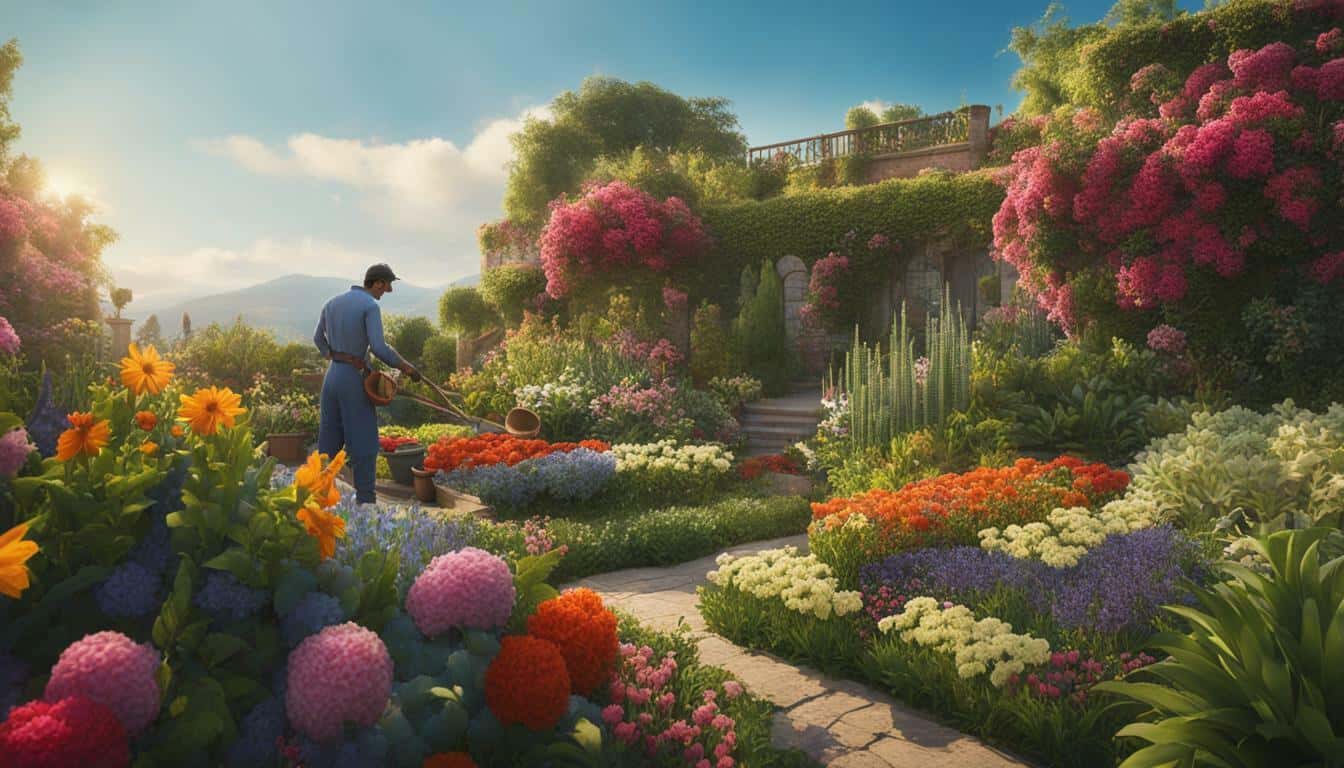



Leave a Reply